Guide to the Lost Paradise Hidden from Everyone – Dashtak, Iran
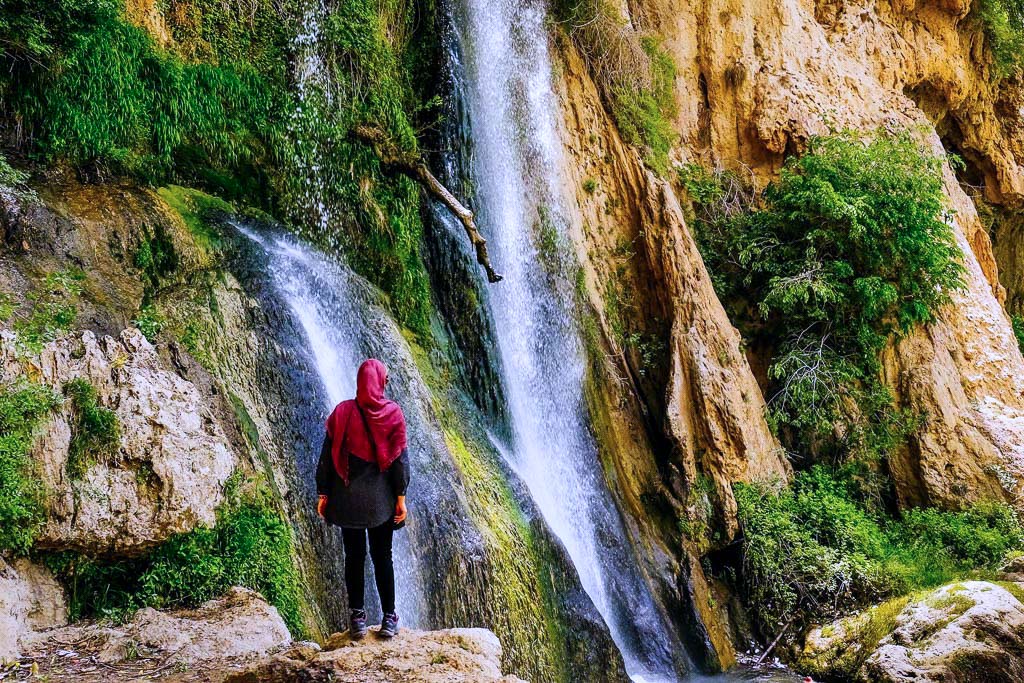
Down the road, relatively speaking, is the tomb of Cyrus the Great. Two-thousand-five-hundred years ago, Cyrus united cultures and founded the Persian Empire – the greatest empire the world had ever known. Around here, the world’s first charter on human rights was authored (now on display at the British Museum in London), the mighty ceremonial city of Persepolis was built, and Kings were laid to rest at the nearby “Necropolis” – the wondrous rock-face tombs of the Persian Empire’s greatest leaders. All around Dashtak lie the tell-tale ruins of a once powerful, and gracious, empire.
Many of these spectacular sites are visited by travellers from around the world. Indeed, the nearby city of Shiraz, and the incredible ruins of the Persian Empire are firm highlights on the budding Iranian tourist trail. But I wondered, perhaps naively, if we were the first foreigners to ever visit this secluded village.
“No, you’re not the first. Maybe, there’s been about forty.”
That’s about one foreigner every few decades.
Not surprisingly, there are no hotels in Dashtak.
But, we stayed overnight anyway.
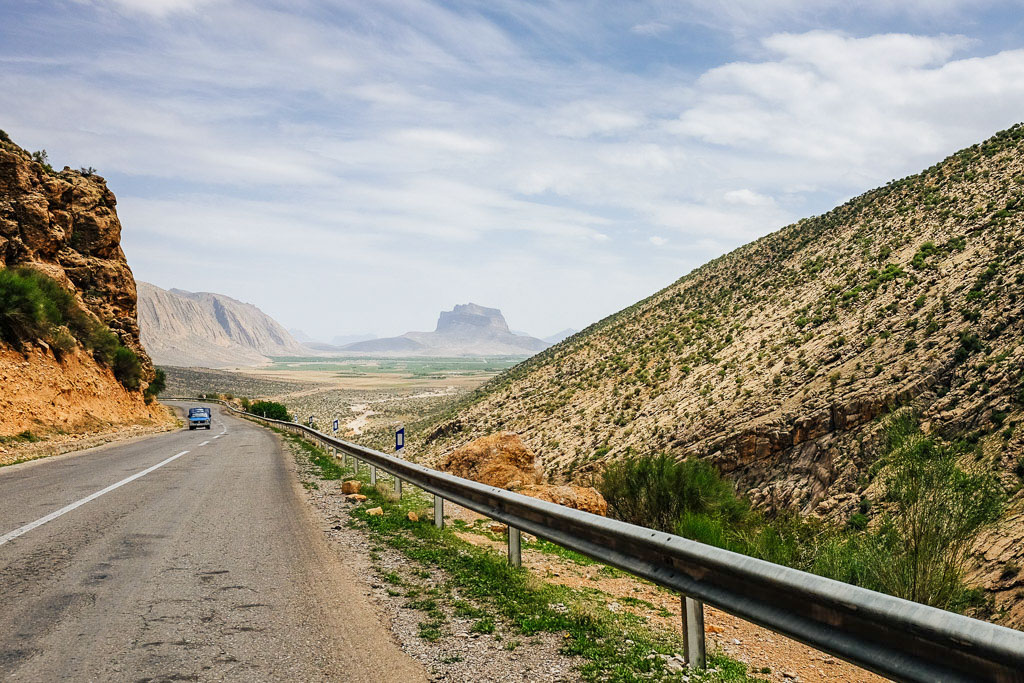
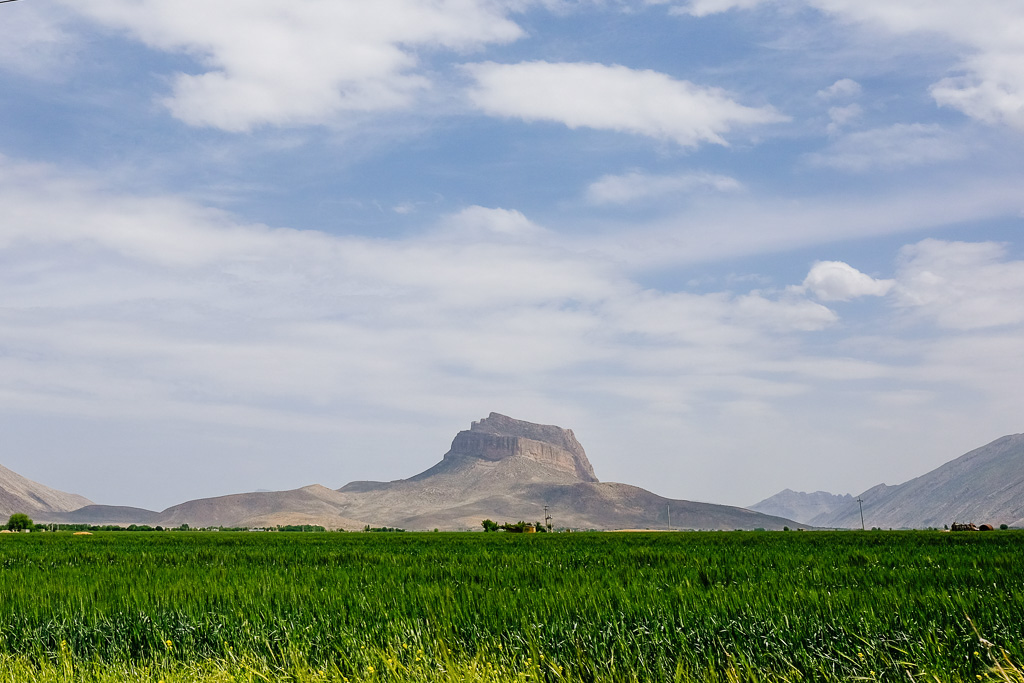
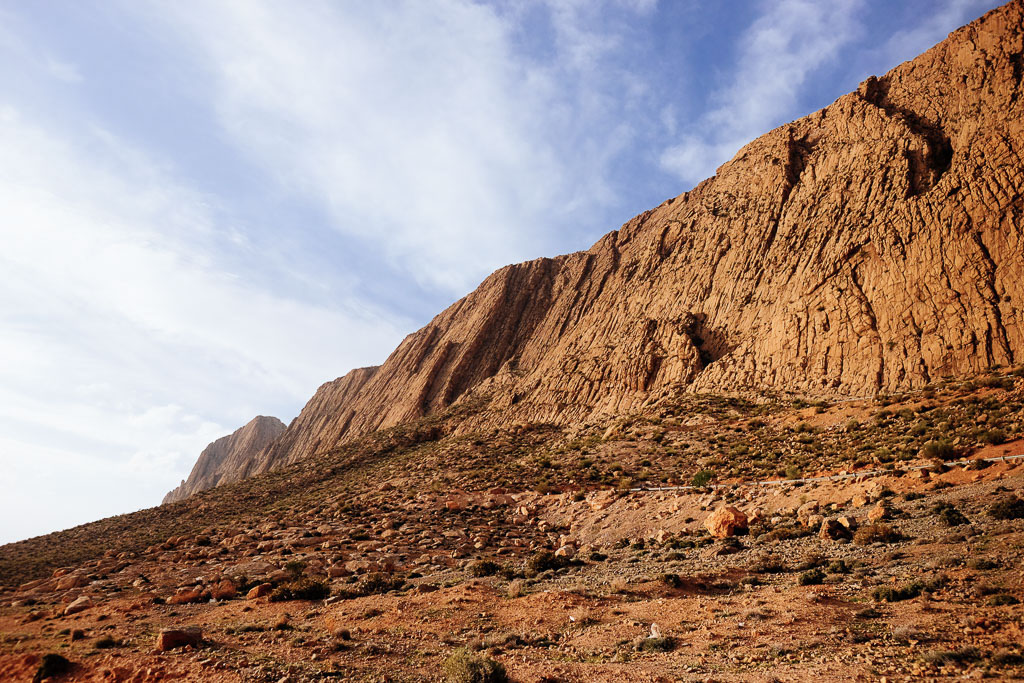
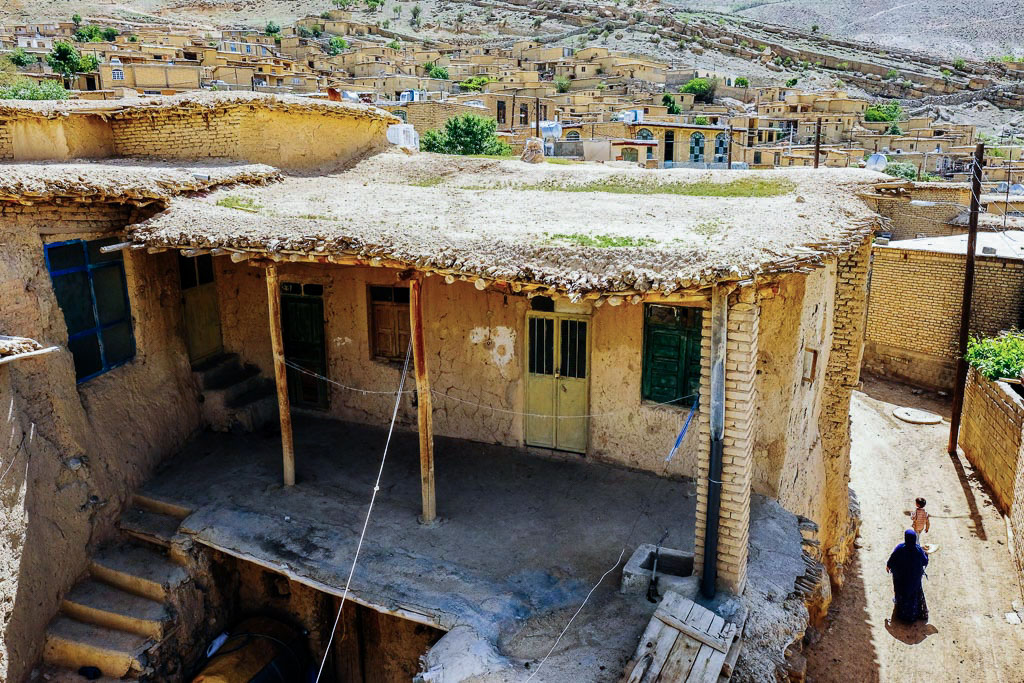
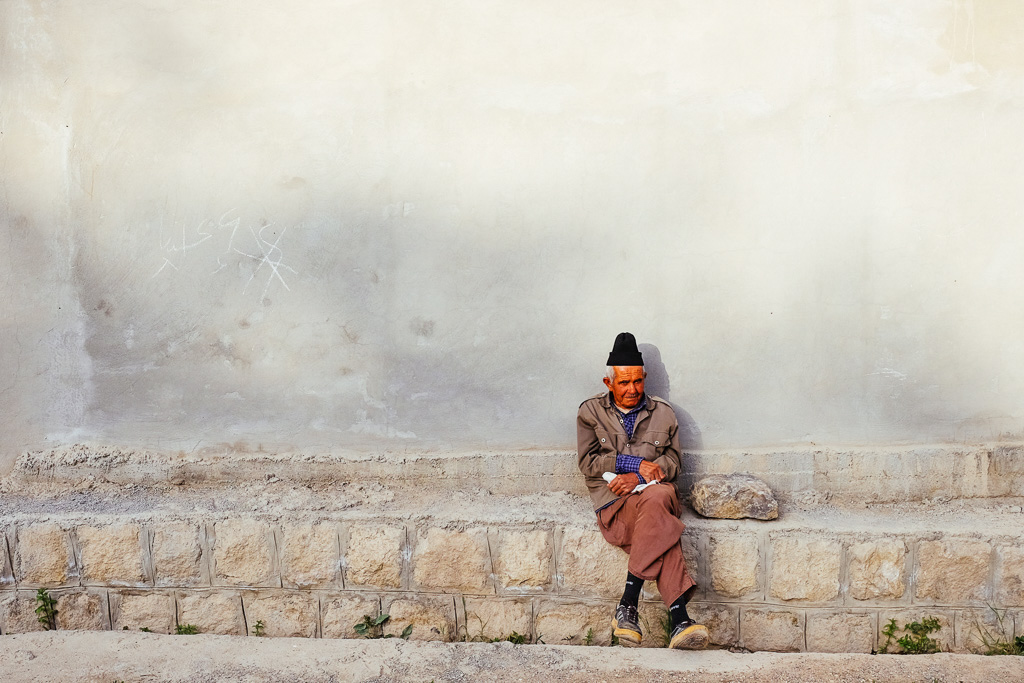
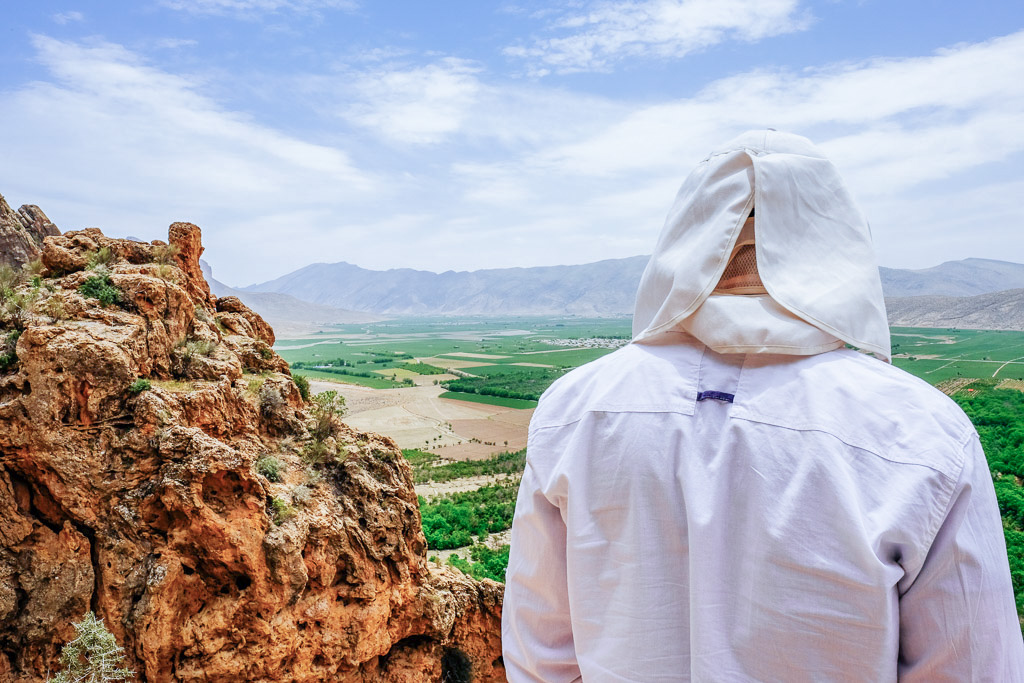
Dashtak means “the people who came down to the plains”. More than one-thousand stairs are carved into the sides of the craggy mountain, and until recently this long hike was the only way to enter one of the oldest villages in Iran. Switching back and forth across the mountain, the people below saw the walkers descending to the plains, and the Dashtaki’s were thus named.
Day and night, Mousavi was our guide to Dashtak. An inter-generational Dashtaki resident, modern-day village-elder, Mousavi is young but calculatingly speaks and thinks in terms of centuries. He noted that although the local river had been much drier for the last decade, it’s not really a serious problem – as eight-hundred-years of local records indicated all of this has happened before, and all of this will happen again.
The village is a scenic amalgamation of styles similar to other ancient Iranian villages. But Dashtak is older, the architectural precursor, a successful template for communal longevity. Hundreds of Dashtaki homes are layered one on top of another, up and down the gentle hills. Constructed from mud walls up to two-meters thick, from any rooftop you may take a stroll around the neighbourhood – peaking into the streets, homes, and courtyards, and glimpsing a lifestyle that has remained this way more-or-less forever.
Mousavi arranged for us to stay in the home of an older acquaintance. Sitting cross-legged on the lounge-room carpet, we got to know each other during our first night together. He spoke of being particularly impressed with the owner’s organic tobacco cultivation skills.
“She’s old, but she really knows how to produce the best tobacco.”
He passed me the Qalyan, and continued.
“It’s never too dry, it’s so smooth.”
After my turn, I offered the pipe to one of my Shirazi friends. He refused, and Mousavi calmly interjected.
“Ha ha! Don’t offer it to him, he doesn’t want any. This isn’t Tarof, it’s all for you and me!”
Tarof is an Iranian concept. Difficult to simplify, best explained to Westerners as Iranians will regularly offer you gifts and invitations. Mostly, they’re generous, heart-felt offers. Sometimes, the motivation is simply politeness. To be sure, you’re expected to thankfully reject what is being offered, and then dance back-and-forth until the legitimacy of the Tarof is finally revealed. Most times it’s a genuine invitation or a gift with no strings attached. Sometimes, it isn’t.
In Dashtak, we would soon learn there was no back-and-forth, no Tarof.
All kindness we received was genuine, and final.
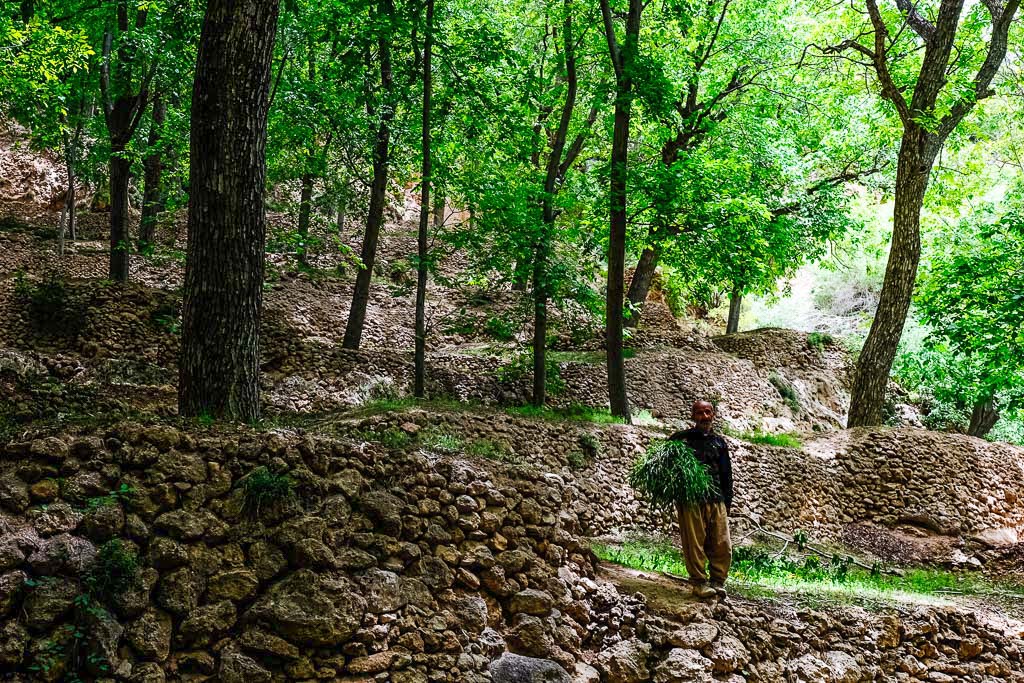
With the casualness of old friends, before the first Qalyan was empty, we were accepted as new members of a very old village. There wasn’t an official announcement, no particular words were spoken. The initiation ritual had been simple – sitting down around a fireplace, sharing a cup of tea, and smoking the Qalyan. As visitors, we felt truly at comfort, and the locals sitting on the same carpet felt truly comfortable with us.
At one end of the main room, in the lounge, a blazing fireplace boiled a pot of herbal tea. The kitchen, at the other end of the same space, could be diplomatically described as rustic but functional. Mousavi spread a tablecloth on the floor, next to the big-screen TV perched lopsidedly on the ancient clay wine-barrel. One plate after another began to arrive. The food was organic and local – standing outside the window, the cheese factory was eating grass.
We ate, chatted, laughed, and learned of Dashtaki history. My friends from Shiraz were enamored, wistfully sighing and making comments about how life was so simple here. At some point, a local Shepherd walked into the lounge, sat down on the floor next to us, said hello, and helped himself to the communal dinner. He smiled and mentioned one of his favourite ingredients – a seasonal vegetable grown only on the compressed-mud-roofs of the local Dashtak homes.
“He’s speaking in the accent and dialect of Dashtak!”
Our Shirazi friends were intently listening to the Shepherd, absolutely riveted with happiness and excitement. Now, we were all part of the Shepherds world. The night carried on, and we played gambling games involving walnuts.
Later in the evening, Mousavi came to light the fireplace in our bedroom. There was no furniture, only a collection of mattresses, pillows, and blankets. One bare light-bulb in the ceiling, and french-style glass doors to the side. After the fire began to roar Mousavi checked that we were OK, and said goodnight. I laid down on the mattress, and immediately felt a cold draft.
In the orange light I discovered the “draft” was actually a missing window in the french-door behind the almost-sheer curtain next to me. I plugged the hole with a spare pillow, momentarily heard the sounds of nightingales and crackling fire, and thought about setting an alarm. But, for sure, the dawn sun would do the trick. I fell asleep faster than I have in many years.
There is nothing else that any person needs, other than the contents of that room.
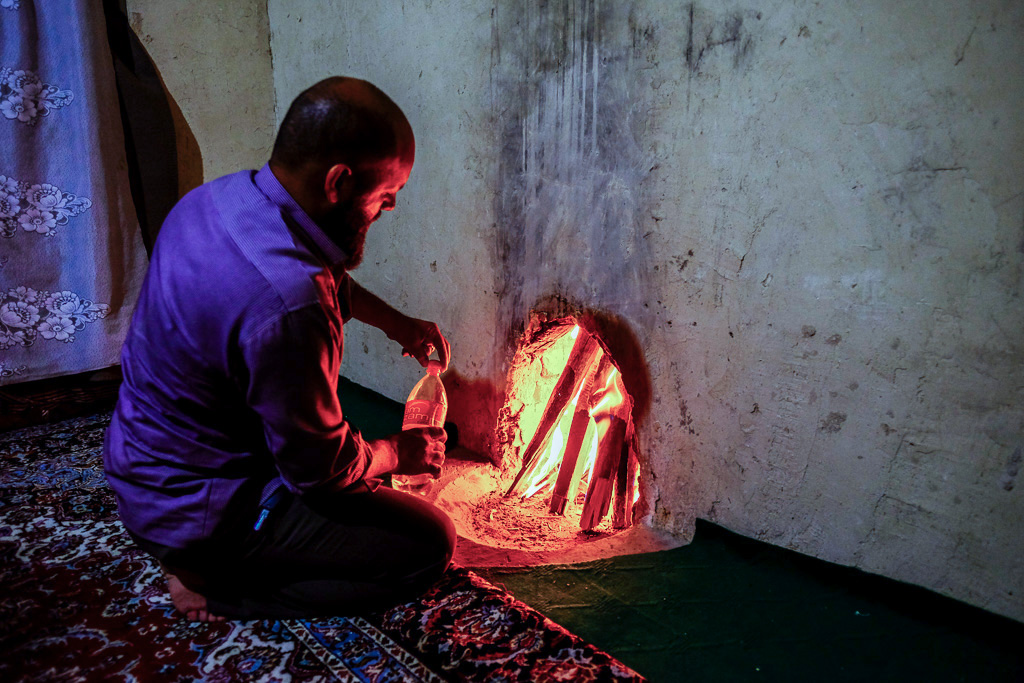
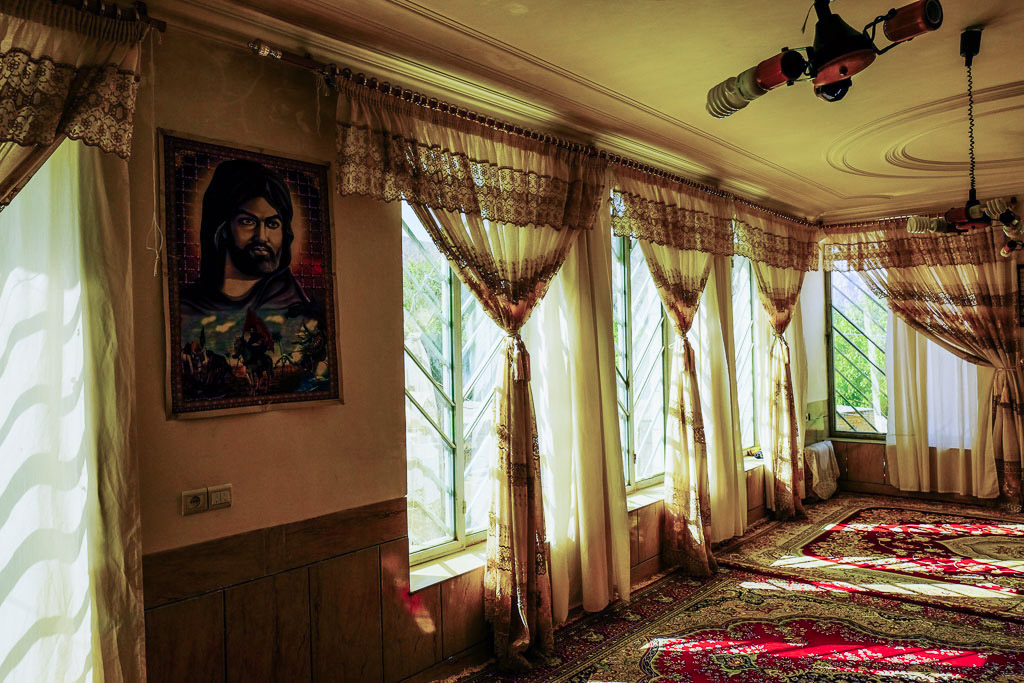
Early morning in Dashtak was spent eating breakfast in the home of the local baker. Of course, the bread was fresh and tasty. By late afternoon, I was napping on the carpet back at our Dashtaki home, but, in-between, I heard two English words, common words, connected in a way I’d never heard before. I’ve since been fascinated by these two words, and I spent some time searching for references on the internet.
There were very few hits. Mostly, involving genetics and immortality. But that’s not how they were spoken to me, it was nothing to do with science. Together these two words explain almost everything wrong with contemporary tourism, and it’s not a stretch to use the two words as a prime example of much that is wrong with modern humanity.
Across Iran, it’s estimated there are over one-million nomads. Tending livestock as the seasons dictate, from summer to winter, moving from plains to Highlands, North, South, East, and West, they travel around the country and carry on tradition. Nomadic people roam the landscape around Dashtak, but the thing is, once upon a time, all of humanity was like this.
All of us. We all come from nomads.
Naturally, there’s is a strong draw to the nomadic life. Not necessarily a yearning to become nomadic, but at least curiosity and wonderment for a once-common lifestyle. Don’t ask my advice, I may be a little biased. As of today, I’ve been roaming and living from a backpack for over two-thousand days. This very website name is a play on the word. However, nomadic traits are in our DNA – through tens-of-thousands of years of human evolution, this lifestyle was bred into humanity. It’s part of our nature.
Almost all standard Iran tours include a visit to see “the nomadic people”. Normally, this happens outside the city of Shiraz, in Fars Provence, the area right around here. It’s where I spend most of my time in Iran. And yet, with all the time I’ve spent here, and with my personal fascination of the nomadic lifestyle – I’ve never once visited “the nomadic people”.
I’ve seen them here and there. Noticed the tents and their herds of sheep. I have a permanent-guide in Iran, we and he’s never once suggested we visit the nomads. When we’re not guiding tours, we’re always looking for new things to see and do in Iran. He lives in and knows Fars Provence like the back of his hand, and knows where to find nomads at any given moment of the year.
As a freelance-guide, he’s previously worked for the biggest names in Iran tourism, and has taken so many tourists to visit the nomads around Fars Provence. But, he’s never taken me.
“You know, when the other tour groups visit the nomadic people, are they really nomads? Really, are they actually nomadic?”
“No. They’re artificial nomads.”
“What do you mean?”
“They’re always in the same place. They don’t move.”
Artificial, nomads, who stay in the same place, so that tourists can visit them.
Huh.
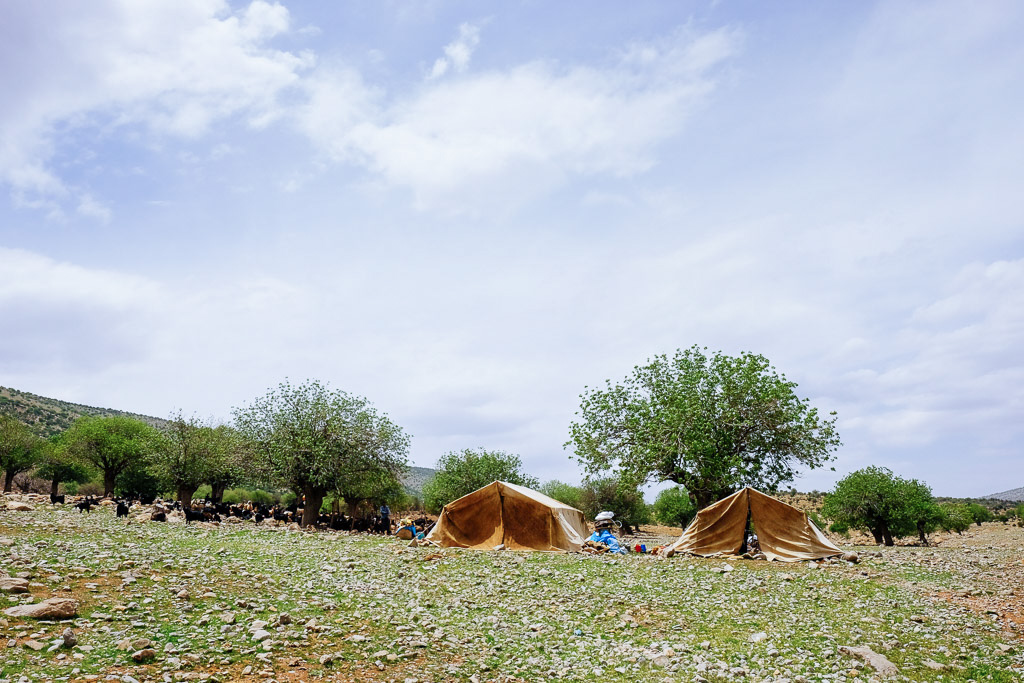
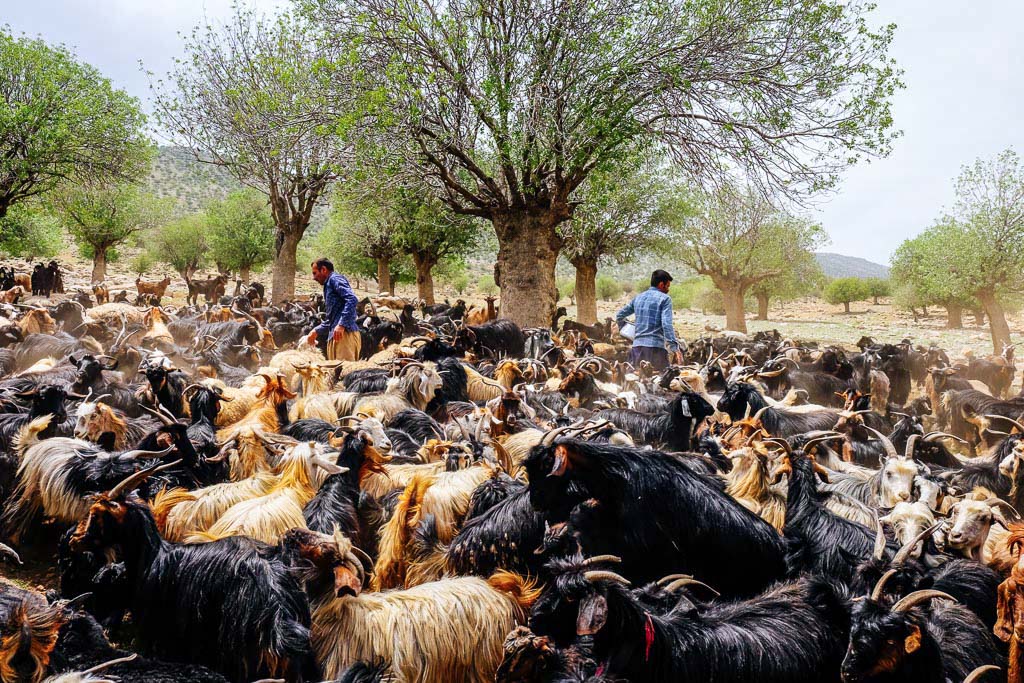
In the plains below Dashtak, I finally met with Iranian nomads. They politely asked us to refrain from taking photos of the milking-ladies, but they welcomed us to their temporary home. When we arrived, they were washing cooking utensils in the pure water of a nearby stream. Tidying their tents. Milking, and making cheese. Taking care of their precious herd, sharing the work, spending each night under the stars, among nature, and then, as a tight-knit band of friends and family, they’ll pack up, and move to greener pastures. When nature says the time is just right. Once, we all lived this way. One day, all of this will disappear.
It’s easy to romanticise the nomadic lifestyle. In reality, the whole scene was dusty, gritty, even a little dirty. It was noisy, and rough. And, entirely unaffected by the demands of modern tourists who may prefer a nomad-souvenir-shop and dress-like-a-nomad photo opportunities. We need those opportunities, at some places, but occasionally, it feels good to see something with just a little more soul.
Certainly, if you want a slice of real-Iran, you should head to Dashtak. Meet the real nomadic people. There might be a bus, I’m not sure. Dashtak isn’t too far from another town, you can probably get to that one by bus. I guess. And, if you make it to Dashtak, keep in mind there isn’t any accommodation. Without a village elder to guide you around, it may be tricky to find the secrets. The nomads might not be around when you arrive, because they’re nomadic.
The most useful thing I’ve read whilst researching Dashtak appears in Wikipedia – “Local clothing DASHTAK beautiful designs and happiness of the people of the village”.
Clearly, I’m not concerned about rapidly increasing tourist numbers here in Dashtak.
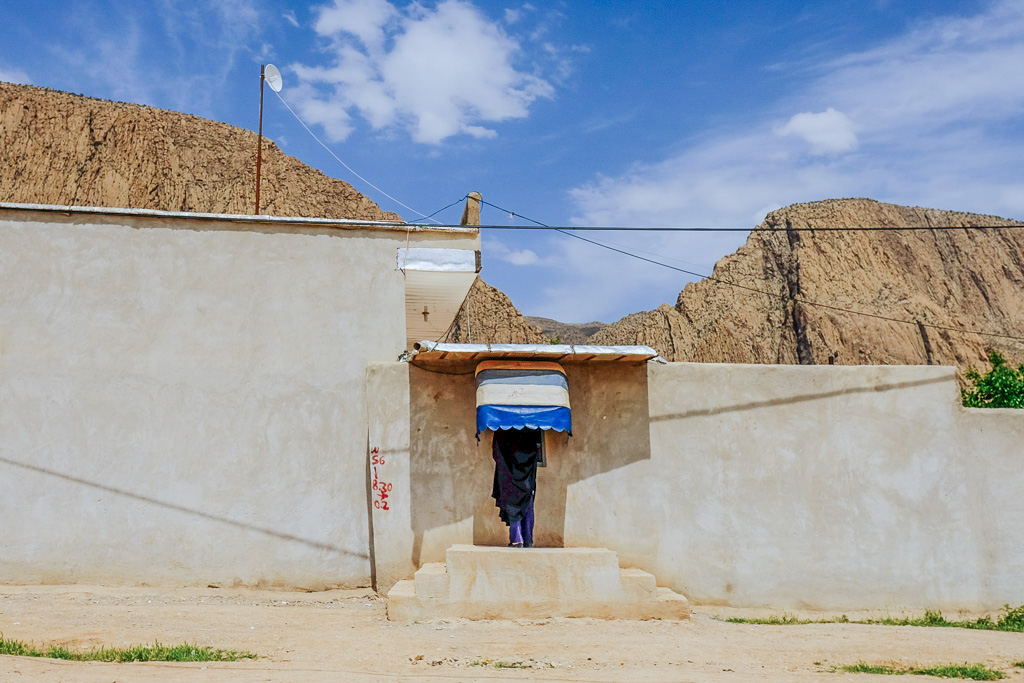
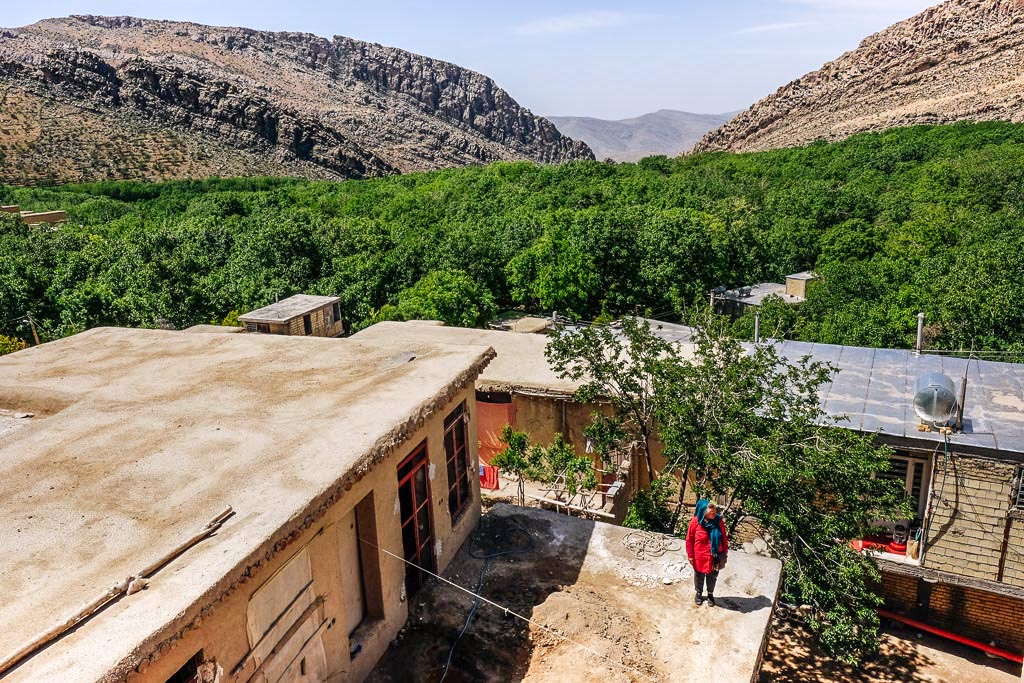
Around a hundred years ago, villagers barricaded themselves inside the strongest home in Dashtak, fighting against attacking invaders from a nearby village. It was described as a “civil war”. Dashtak prevailed, and Mousavi took pride in the strength and safety of this multi-level building – particularly the thick, weathered, front door, and the crucial lookout tower on the roof – one of three extant in Dashtak.
Built by a former village elder, now under the guidance of Mousavi, the historical multi-level home is made from mud walls meters thick. It’s worn, but original, and is now being sympathetically and skillfully restored to former glory. The renovations are coming along nicely.
Later this year, the home will open – as Dashtak’s first hotel, ever.
In October, we will bring the first group of foreigners, ever, to stay in Dashtak.
I’d already made my decision, on the first night sitting around the fireplace, watching the Shepherd eat from a steel pot. Before I met the Dashtaki nomads, or felt the waterfall, or strolled through mystical terraced walnut groves and gazed over the incredible natural landscape, or seen any of the other secrets.
On our final day, as we were saying our goodbyes, I told Mousavi of our plan to be his first guests.
“Well, Nate, I look forward to meeting your friends. But that is a separate matter. Right now, you should know how much we have enjoyed having you around in Dashtak the last two days.”
We hugged.
“Nate, You are always welcome here, anytime”.
Today, after thousands of years, there is a road that enters Dashtak.
Nate
PS, October 2018 Yomadic Iran “Untour” seats are selling fast, we’re down to the last few places for 2018. Book now with just a 500 EUR deposit, don’t forget to bring your camera, for all the details click here.
PPS, thousands of people receive the Yomadic email, sent occasionally, from somewhere around the planet. I’m currently in Shiraz, Iran, and preparing for an overland journey to a new country for me. From there, I’ll be flying the most unpopular route in the world, returning to a country I’ve only visited once before, for very special celebration.
22 thoughts on “Guide to the Lost Paradise Hidden from Everyone – Dashtak, Iran”
Comments are closed.
Nate,
At first it looked like Utah, then Darkar, but the head scarfs clued me in… amazing images.
I don’t know, how about some famous Persian movie star from the late 60s???
Be well
Laurence
Hey Laurence, always nice to hear from you. Yes, you wouldn’t be the first person to compare parts of the Iranian landscape to certain American landscapes.
But, no, you’re incorrect about the movie-star guess… I’ll see if anyone else knows…
Stay strong!
Nate
Imam Ali!
Landscape looks amazing – jealous of the wandering! Thanks for sharing Nate.
Keith! How are you mate… must be time for you to come back here..
send the visa fairy
I don’t have the contact phone number…
“but, in-between, I heard two English words, common words, connected in a way I’d never heard before. I’ve since been fascinated by these two words, and I spent some time searching for references on the internet.”
What were the 2 words?
http://www.GringoWithTheLingo.com
Artificial Nomads, my gringo friend!
It seems like yesterday we were discussing that Trump would never be president…A trip back to to Iran is definitely called for. Thoroughly enjoyed this post Nate! Hope you guys are well
Stay in touch Dustin, I have some amazing planned for previous guests, it will take place in late 2019 and will genuinely be a first in travel…
Imam Hussain is the portrait
Nice one John.
Cyrus the Great?
And, whoever gets it right, do they win a seat on your next tour?
Sorry, incorrect… and yes, you could have won a seat on the next tour, there is only one seat left for 2018… 🙂
What a great post! All of the photos were amazingly captured, I would much very love to visit this place someday!
Maybe you could MIGRATE AS YOU ARE A MIGRATION EXPERT!
N A T E – I’m speechless.
…and you’re starting to speak with the romance of a true Iranian now.
That’s quite the compliment, thanks Candace. All those visits to Hafez must be finally rubbing off on me…
Hi Nate!
Since most people in Fars province are Shia muslims Imam Hussein would be the most likely guy on the picture. But you rejected that suggestion already. Well, on all minor pictures below the portrait the hero can be seen mounted or with a horse. As far as I know, the most famous horse in Iranian literature is the stallion Rakhsh in Ferdowsis Shahnameh. So my guess is Rostam.
No! You are correct!
Having never heard of it, I saw Dashtak from 30,000 feet on a Qatar Airways flight 2 weeks ago. Enthralled, I managed to find it on Google Earth and then entered it as a search term (thank you Google!). Now your story makes me want to visit even more! I fervently hope the political situation improves enough to allow me as an American to do that someday (hopefully, before Dashtak is discovered by everyone else).
Hey Alan! What a great story. I hope you get to Iran for yourself one of these days…